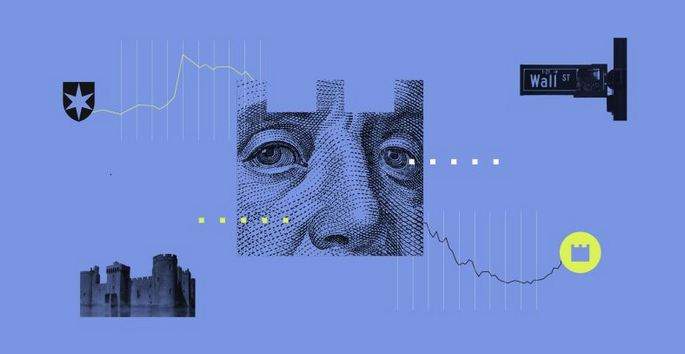Jeremy Glaser: For Morningstar, I'm Jeremy Glaser. As gold officially enters a bear market, I'm here with Elizabeth Collins; she's our director of basic materials research, to see what's driving the downward pressure on gold prices and what her long-term forecast is.
Elizabeth, thanks for joining me today.
Elizabeth Collins: Thanks for having me, Jeremy.
Glaser: Over the last couple of days, we've seen some pretty steep decline to gold prices. Is there any one event that's driving that, or is it more of a combination of factors?
Collins: I think that if I could point to one event that probably kicked us off in this recent bear market, especially the most extreme moves we've seen over the past few days, was fears that Cyprus would use some of their gold reserves to satisfy some of their bailout package. But I don't think that that's something that can necessarily ricochet throughout the European Union, because there is a treaty that many countries can't use reserves to satisfy debt needs, because they belong to the central bank. But more recently, we've seen Chinese economic slowdown, some concerns about that. I think in general, in gold investing, it's just very momentum driven. So that if you see people getting disenchanted with gold, they'll sell it, and that can become a positive feedback loop.
Glaser: So let's talk a bit about central banks. You mentioned that Cyprus may have kicked all this off. What are your expectations for central bank buying of gold? There was some talk that was a big supporter of gold price for a while. Has that story kind of played out by now?
Collins: Certainly central banks being net purchasers of gold was one of the largest single factors that drove gold prices higher in recent years, and that had been a reverse of the trend that had prevailed over the previous decade, which was that central banks were net sellers of gold. If you take the view that that would kind of abate, that central banks couldn't interminably be net purchasers of gold, some of the support for gold prices would have eventually dissipated.
Glaser: What about other drivers of demand, things like physical gold ETFs that had gained so much in popularity? Have you seen any changes there that might be impacting gold prices?
Collins: We have seen a sell-off in ETF gold holdings over the past quarter or so. It's a smaller part of the overall demand for gold. In terms of individual investors accessing the gold market, jewellery is a much bigger piece of the pie.
Glaser: So let's take a look at your long-term forecast. Where do you think gold is going to be over that long-haul and how do you reach that number?
Collins: Our long-term forecast for gold is $1,100 in real terms, so it inflates to about $1,200 in year four and five of our explicit forecast period in our discounted cash flow models. We think that we'll get there a number of ways. One, it's based on our look at the marginal cost of production and what it takes to pull gold out of the ground, and also some of those factors that you and I talked about before, our belief that central banks couldn't be net purchasers interminably.
Glaser: So what does that mean for the gold miner stocks? Given that long-term outlook, does that make them investments that people should be taking a look at?
Collins: Gold mining stocks are starting to look cheaper today, increasingly so as the hours tick by, it seems. In many cases, I don't think that gold mining valuations were ever really incorporating gold prices of $1,800 in perpetuity. In terms of what our fair value estimates will do, I mentioned that we've had a long-term gold price forecast of $1,100 for a few years now. So our long-term cash flow forecast probably won't change that much. What will change is that we use COMEX future prices to populate the first three years of our forecasts, so our near-term cash flow forecast will fall as gold prices fall and that could affect our gold mining valuations to a certain extent.
Glaser: So investors may want to be somewhat cautious there, but there might be some values if prices keep falling.
Collins: I think there could be some values.
The other two things that I want to keep an eye out for are project deferrals and dividend cuts. So on project deferrals, even though it makes sense probably from an [net present value] perspective to go ahead with the mining project—even at $1,300 gold, many of the miners' projects are probably still economic—but if they don't have the free cash flow to support that investment, they might not be willing to suffer from several years of negative free cash flow. So they might delay projects, even if they make economic sense.
The other thing is, we've seen a lot of gold miners ratchet up their dividends very aggressively in recent years in order to attract investors into gold miners, and that's a significant source of cash outflow. So as gold prices fall, we could see dividends being cut as well.
Glaser: Elizabeth, thanks for your thoughts on gold today.
Collins: Thank you.
Glaser: For Morningstar, I'm Jeremy Glaser.






:quality(80)/cloudfront-us-east-1.images.arcpublishing.com/morningstar/SJ4TPTNUHRHMDOLNIMADKA7WW4.jpg)

:quality(80)/cloudfront-us-east-1.images.arcpublishing.com/morningstar/AY4IODDAJRDHVPZMQKMI3BD5JE.png)

:quality(80)/cloudfront-us-east-1.images.arcpublishing.com/morningstar/KWOIHC3SK5CHJPXXNSL3RJ7VPQ.png)






